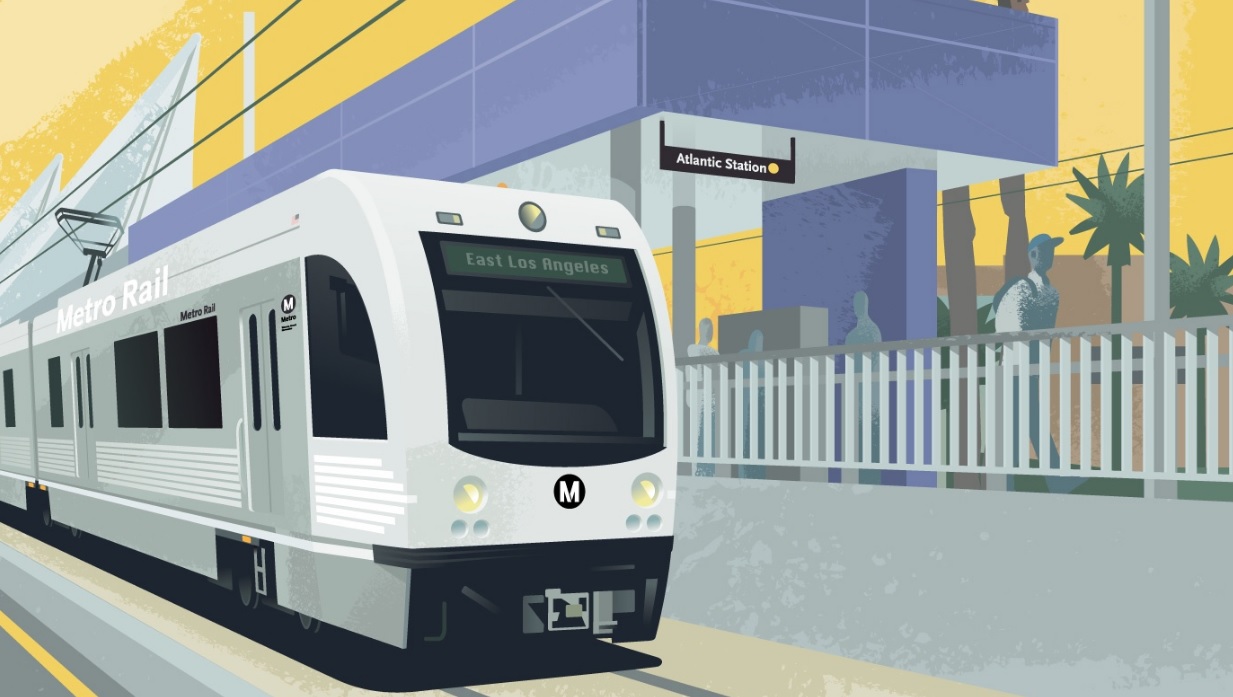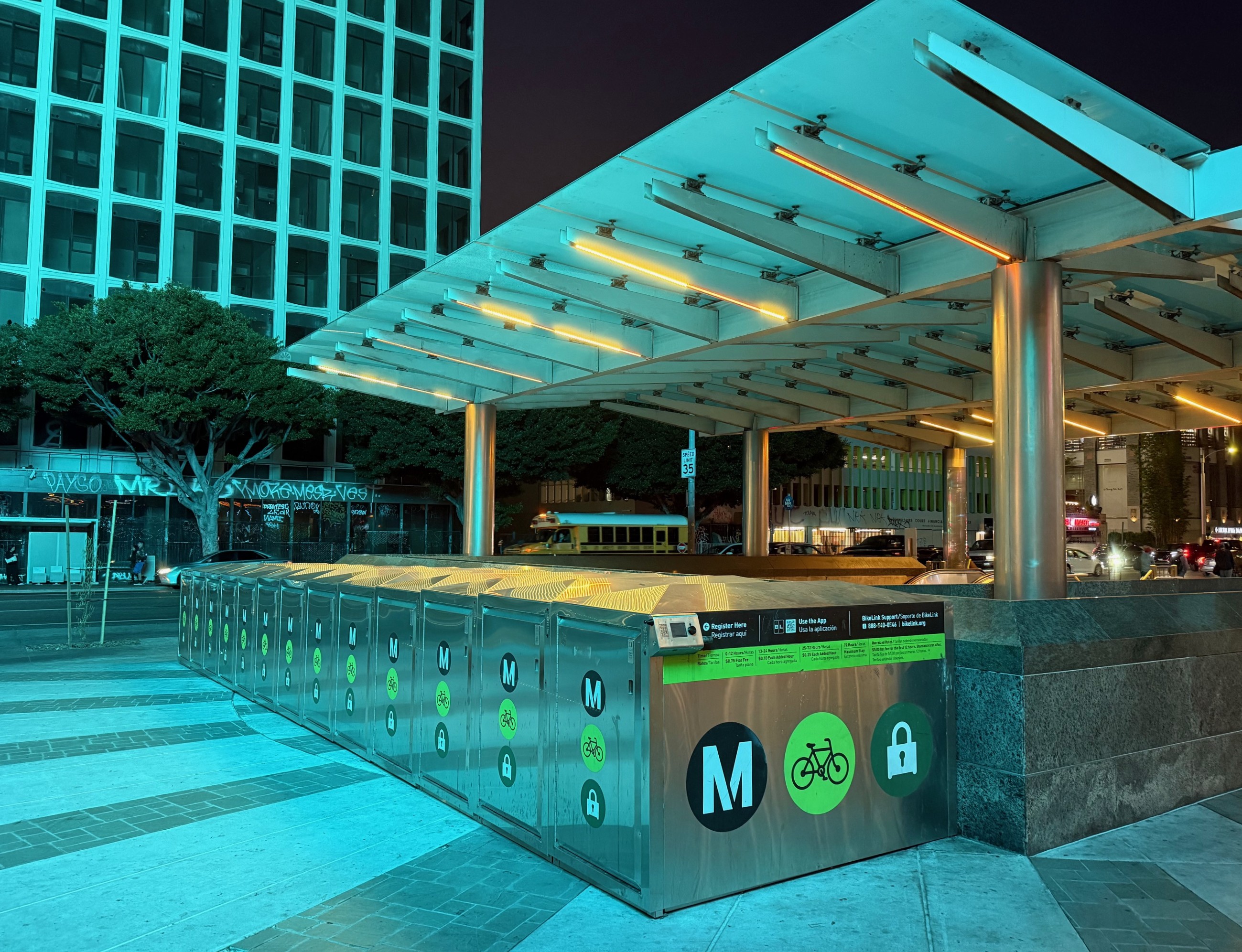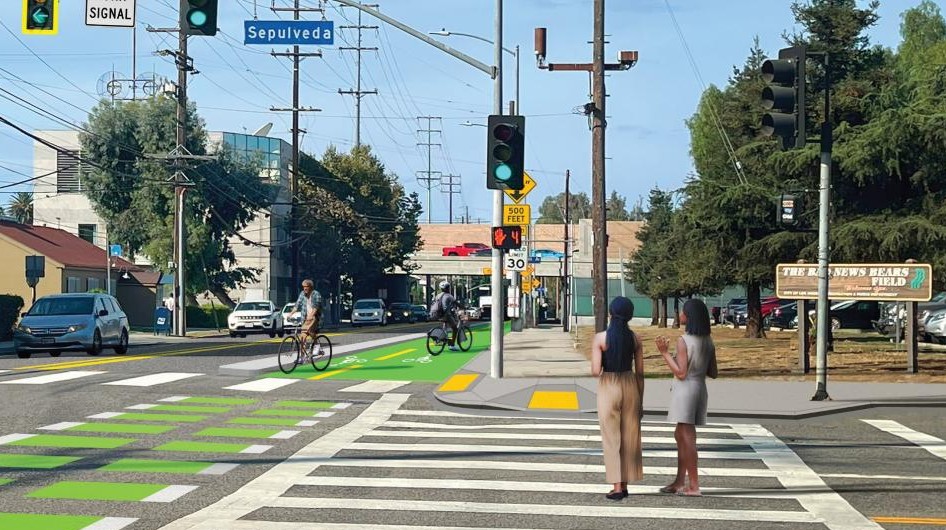Yesterday, Metro's Planning and Programming Committee approved final project definitions for a future Eastside Gold Line extension. If approved by the full board next week, the project moves forward into procuring a consultant to do environmental clearance studies.
The Eastside Gold Line extensions are funded in the Measure M expenditure plan with two phases:
- $534 million two $543 million allocations for a phase planned to break ground in 2029 and open in 2035
- $2.89 billion for a phase planned to break ground in 2053 and open in 2057
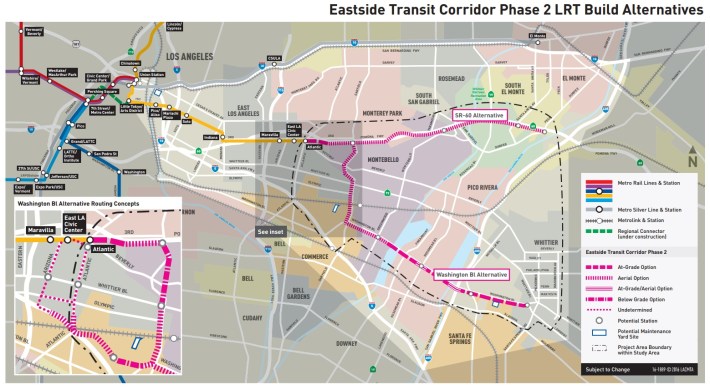
In the somewhat less-flushly-funded times before the passage of Measure M, there had been a fair amount of competition between communities pushing for the Washington Boulevard alternative vs. the 60 Freeway route. The upcoming environmental clearance studies will include three alternatives: Washington, the 60 Freeway, or both combined. It appears that, ultimately, the project will probably include both alignments, though they may be built together, or there may be jockeying as to which segment proceeds first.
At yesterday's committee meeting, Metro staff reported that the combined alternatives were feasible together as a Y-shaped project, with a 3-way junction near the current Atlantic Boulevard Station. Staff were optimistic that Measure M funding, combined with other sources, could be sufficient to build the entire Y, currently estimated to cost roughly $6 billion.
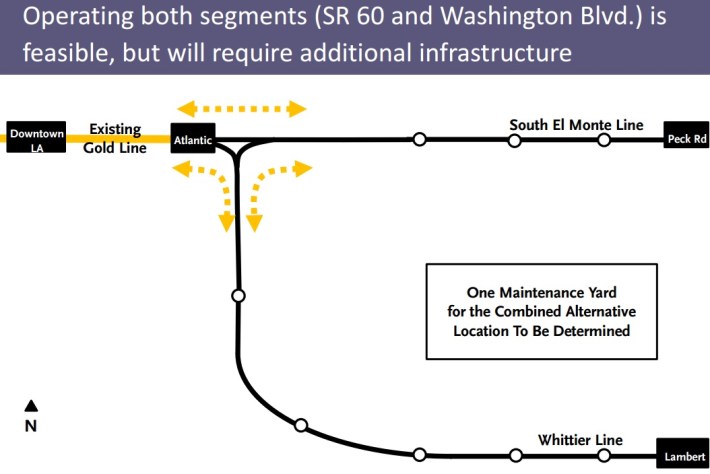
The southern "Washington Boulevard" alignment goes through unincorporated East L.A., the cities of Montebello, Commerce, Pico Rivera, and Santa Fe Springs to a terminus in Whittier. Metro had initially proposed elevated tracks to connect from the current Gold Line 3rd Street terminus down to Washington Boulevard. Various elevated rail proposals were unpopular, and now the plan is to run the line as a nearly 3-mile long light rail subway under Atlantic Boulevard. Along Washington Boulevard, the line will run partially aerial and partially at grade.
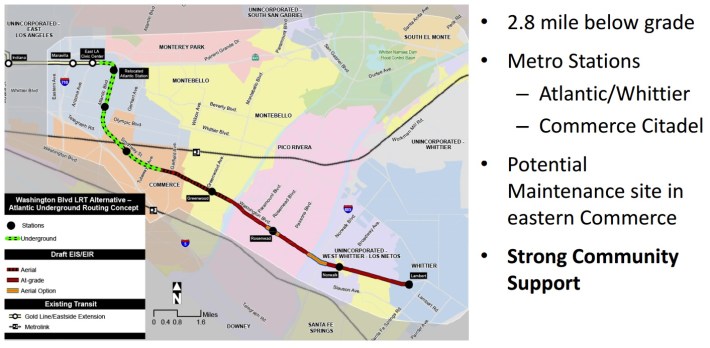
The northern leg parallels the 60 Freeway through Montebello and Monterey Park to a terminus in South El Monte. For the most part, the train would run on an aerial structure immediately south of the freeway.
Unfortunately for the ease and cost of the project, there is a big toxic landfill site - the Operating Industries Inc. Landfill - located immediately south of the freeway in Monterey Park. In order to avoid dealing with toxins at the landfill site, Metro's aerial train structures will fly over the freeway, then back. This jog has the city of Monterey Park now interested in an additional Gold Line station to serve the planned and partially-under construction Monterey Park Marketplace shopping center.
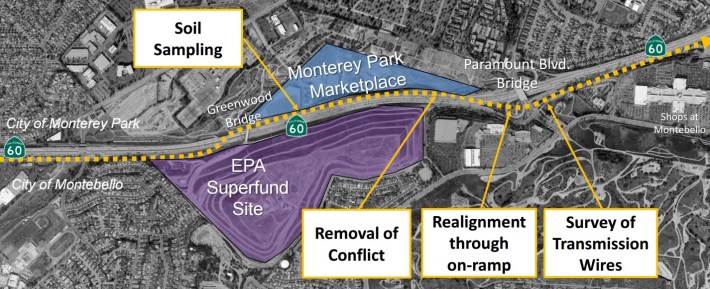
Though the 60 Freeway route brings additional cities, communities, destinations, and large parks into the Metro system, as the route parallels the freeway, the places it serves tend to be quite dominated by car-centric development patterns.
For additional details on this project, including upcoming meetings, see Metro's Eastside Transit Corridor Phase 2 project page.
